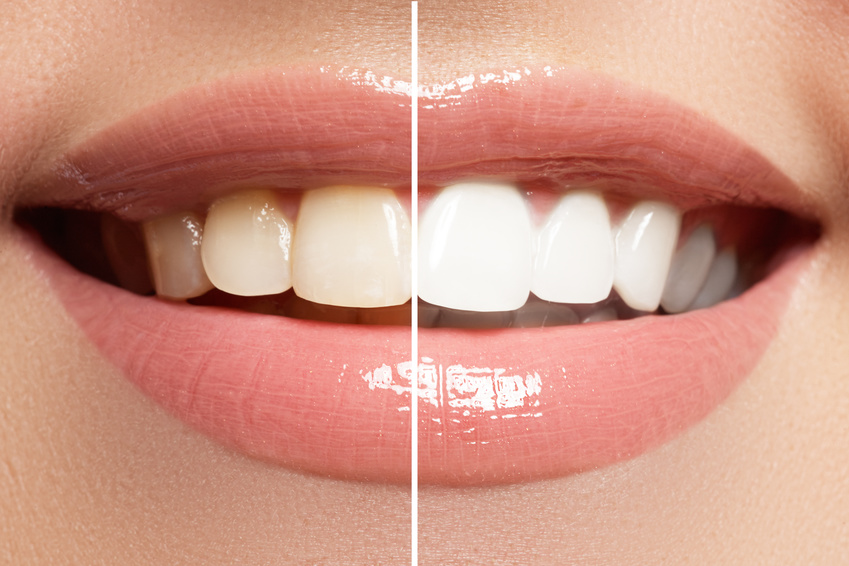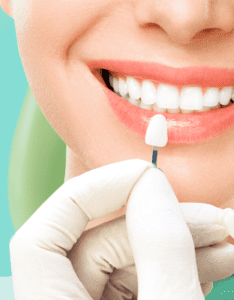According to Business Insider, people take as little as 5 seconds to make judgments about you, in part based on your appearance. One way to boost you or your child’s confidence this back-to-school season is to invest in teeth whitening treatments. A bright, healthy smile can increase self-esteem and overall performance. Murfreesboro Family Dentistry can help the whole family get a brighter, whiter smile this fall.
What Causes Teeth Stains?
Many everyday things cause stains to develop on your pearly whites, even if you have excellent oral hygiene.
Tobacco: Nicotine and tar in tobacco products can cause stains on your teeth. Nicotine causes yellowish stains on the surface of the teeth. Tar is dark and stains your teeth quickly. Even vaping can lead to discoloration and staining if you use vape juice that contains nicotine.
Beverages: Three of the most common causes of teeth stains are tea, coffee, and red wine. Soda and other sugary drinks can also wreak havoc on your enamel.
Trauma: If you get hit in the face hard enough, it can damage the enamel of your teeth and cause discoloration.
Medication: Some antibiotics, antihistamines, antidepressants, and blood pressure medication can cause teeth to become yellow. Chemotherapy can also cause your teeth to become discolored.
Genetics and age: Over time, the enamel of your teeth wears down and becomes dull. This is partially out of your control and due to your genetics. Some people have naturally yellow-tinted teeth or thinner enamel that stains easier.
How Does Teeth Whitening Work?
Professional teeth whitening uses either hydrogen peroxide or carbamide peroxide to break the stains on the enamel, or surface of the teeth. That makes the color less concentrated and brightens your teeth. The dentist usually uses a rubber shield or a gel to protect your gums during the bleaching process.
Another option is to have your dentist make a custom tray for at-home teeth whitening treatments. You place the bleach solution into the tray and wear it for the prescribed length of time. This is an excellent option for people with busy schedules. The treatments usually take a little longer than in-office treatments but can produce the same results.
Use caution when considering over-the-counter bleaching products like whitening strips or toothpaste. Although the bleach concentration is lower than the whitening solutions your dentist uses, not all of them are safe for your teeth. Discuss the best options with your dentist, and be sure to choose products with the ADA Seal of Acceptance.
How Long Does A Whitening Treatment Last?
Unfortunately, teeth whitening is not permanent. Everyone’s teeth are unique, so there is no easy answer to how long a whitening treatment lasts. If you avoid food and drinks that cause stains and practice good oral hygiene, an in-office whitening treatment can last a year or longer. People who eat and drink damaging beverages and food or smoke nicotine might see the whiteness fade in as little as one month.
Are There Side Effects Of Whitening Treatments?
If you choose to have in-office whitening treatment performed by a dentist or dental hygienist, the process is safe and painless. Overusing whiteners (especially over the counter products) can damage the enamel or gums.
Some people develop tooth sensitivity when the peroxide in the bleach solution works through the enamel to the soft layer inside your tooth (called dentin) and irritates the nerves. The sensitivity from whitening treatments usually goes away, but your dentist might prescribe a fluoride mouthwash to help restore the enamel.
Younger patients need to consult their dentist before using any whitening treatments. Your dentist can help you start the school year with a fresh, white smile in a safe way that will keep your teeth healthy and strong.
Who Will Benefit From Teeth Whitening?
Professional teeth whitening is an excellent option for most people who have their permanent adult teeth and good overall oral health. Some conditions like receding gumlines, previous dental work, or poor oral health may not be ideal candidates for whitening treatments.
Teeth whitening works best to remove stubborn, yellowish stains. Whitening treatments are usually less effective on brownish or greyish stains.
Whitening treatments don’t work on all teeth. If you have caps, veneers, tooth-colored fillings, or other dental restorations, then the whitening procedures may cause other problems. The pre-existing dental work does not lighten in the same way your enamel does. The fillings, caps, and other restorations might not match your teeth anymore. In extreme cases, the pre-existing dental work may need to be replaced to match the new shade of your teeth.
Does Insurance Cover Whitening Procedures?
Dental insurance does not usually cover the cost of whitening treatments because it is considered a cosmetic procedure.
Whitening treatments are an excellent investment in the overall appearance of your smile and they will boost your self-confidence. Murfreesboro Family Dentistry will help you kick the new school year off with whitening treatments for the whole family. Contact us today to schedule an appointment.





